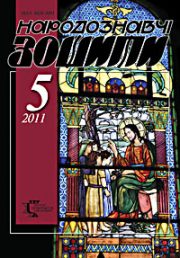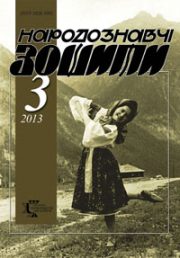The Ethnology Notebooks. 2018, 3 (141), 671–675
UDK 299.18+398.3+904
DOI https://doi.org/10.15407/nz2018.03.671
SIGN OF PLEIADES — SYMBOL OF THE GOD-WINDOWS OF THE UNDERGROUND WORLD
Kyrii Viktor Vladyslavovych, Deputy Editor-in-Chief
of the Drohobych District Newspaper “Frankovyi Krai”,
a Ph.D. (Ph.D., Scientific Supervisor Dr. Stepan Pavlyuk).
Svobody Avenue 15, 79000, Lviv, Ukraine.
Contacts: Tel.(032) 297-01-57; e-mail: ina@mail.lviv.ua
Abstrakt. By analyzing the folk beliefs of the Slavs, the symbolic symbolism of archaeological monuments and individual Slavic names of the constellation of the Pleiades, a connection between the numerical symbols of the Seven and the constellation of the Pleiades, as an archaic symbol with the mythological image of the goddess-leader of the underworld — in his various ethno-cultural variants is established.
Keywords: Trypillian culture, symbolism of the Seven, Pleiades, Volosozhar, Baby-zvizdy, disk from Nebre, Phaistos disk, Great Cretan goddess, dance «Podolyanochka».
Received 19.03.2018
References
Kyrij, V. (2016). Fests’kyj dysk — v etnokul’turnomu konteksti. Deshyfruvannia minojs’koho piktohrafichnoho pys’ma. Drohobych: Posvit [in Ukrainian].
Ko, M. (2007). Majja. Ischeznuvshaja civilizacija: legendy i fakty. Moskva: Centrpoligraf [in Russian].
Muk, O. (2007). Nebesnyj mech nad Atlantidoj. Moskva: Veche [in Russian].
Pavliv, D. (2005). Skarb iz s. Ruda ta deiaki aspekty kul’turnoi praktyky u hal’shtats’kyj period na Zakhodi Ukrainy. Materialy i doslidzhennia z arkheolohii Prykarpattia i Volyni. Issue 9, pp. 257—272. L’viv [in Ukrainian].
Hordijchuk, Mykola. (ed. uporiad). (1991). Perlyny ukrains’koi narodnoi pisni. Pisennyk. Kyiv: Muzychna Ukraina [in Ukrainian].
Servyj. (1996). Kommentaryj k «Eneyde» Verhylyia III 73. In Losev A.F. Myfolohyia hrekov y rymlian. Moskva: Mysl’ [in Russian].
Tolstoj, N.Y.(ed.). (2009). Slavianskye drevnosty: etnolynhvystycheskyj slovar’: v 5 t. (Vol. 4: P—S). Moskva: Mezhdunarodnye. Otnoshenyia [in Russian].
Fedoriv, M. «Obozhnennia rusalky».
Retrieved from: http://rodova-knuga.narod.ru/center_list_0138.html.







